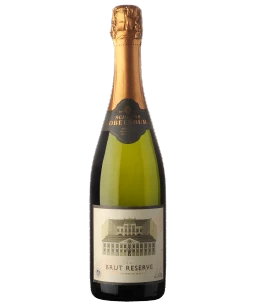Niederösterreich
Lower Austria: crus near and far from the Danube
Austria's largest state is also its largest wine region. 46,000 hectares are planted with vines in Lower Austria. It is a heterogenic wine region, consisting of eight wine growing areas. While white varieties like Grüner Veltliner and Riesling dominate in the areas north and west of Vienna, red varieties set the tone in the south and in the southeast (Thermenregion and Carnuntum). The internationally famous white crus from Grüner Veltliner and Riesling develop in the picturesque Wachau and Kamptal.
Sparkling wines from Niederösterreich
White wines from Niederösterreich
Rosé wines from Niederösterreich
Red wines from Niederösterreich
Sweet wines from Niederösterreich
When wine from Lower Austria is mentioned, one first thinks of the legendary, immensely prestigious Grüner Veltliners and Rieslings from the Danube. Although the Wachau – along with the Kamptal region – may well be the most prestigious wine-growing region in Lower Austria, its 1,350 hectares contribute less than five percent of the overall area of this wine country. The most important region by surface area is undoubtedly the Weinviertel region, with vines grown on 13,500 hectares. The vineyards are spread over a huge, largely open area, which is bordered by the Czech Republic to the north and Slovakia to the east. Since the Weinviertel DAC Grüner Veltliner was introduced here in 2002 – the first registered designation of origin of its kind in Austria – the peppery-crisp Grüner Veltliners from this area have experienced an upswing. In 2009, these regulations were complemented by stronger wines with the DAC Reserve.
The Grüner Veltliner superpower
Grüner Veltliner clearly sets the tone for varieties in Lower Austria (11,900 hectares). Following in second place is Zweigelt, with 3,330 hectares. The strongholds of these and other red varieties are the Thermen region and Carnuntum, where excellent Blaufränkisch wines have been grown for a number of years.
Vintners have the complex climate to thank for the fact that white wines with incredible finesse can be cultivated just as easily as well-structured reds (even Bordeaux varieties, for example, turn out perfectly in Carnuntum). Depending on the weather, cool air masses penetrate into the wine area from the Waldviertel in the northwest, but vineyards often sit in the areas where warmer air from the Pannonian Plain is influential.
Great spectrum of soils
The soil conditions are no less diverse: while loess soils with gravel, gneiss and sand tend to predominate in the Wachau and Kamptal regions, loamy soil with gravel and sand dominate in Carnuntum, and the soil types vary in the Weinviertel area from granite to calcareous sandstone. In these highly diverse terroirs, it is not just long-established varieties and international plantings that find perfect conditions, but also rare specialties like Zierfandler and Rotgipfler.
















